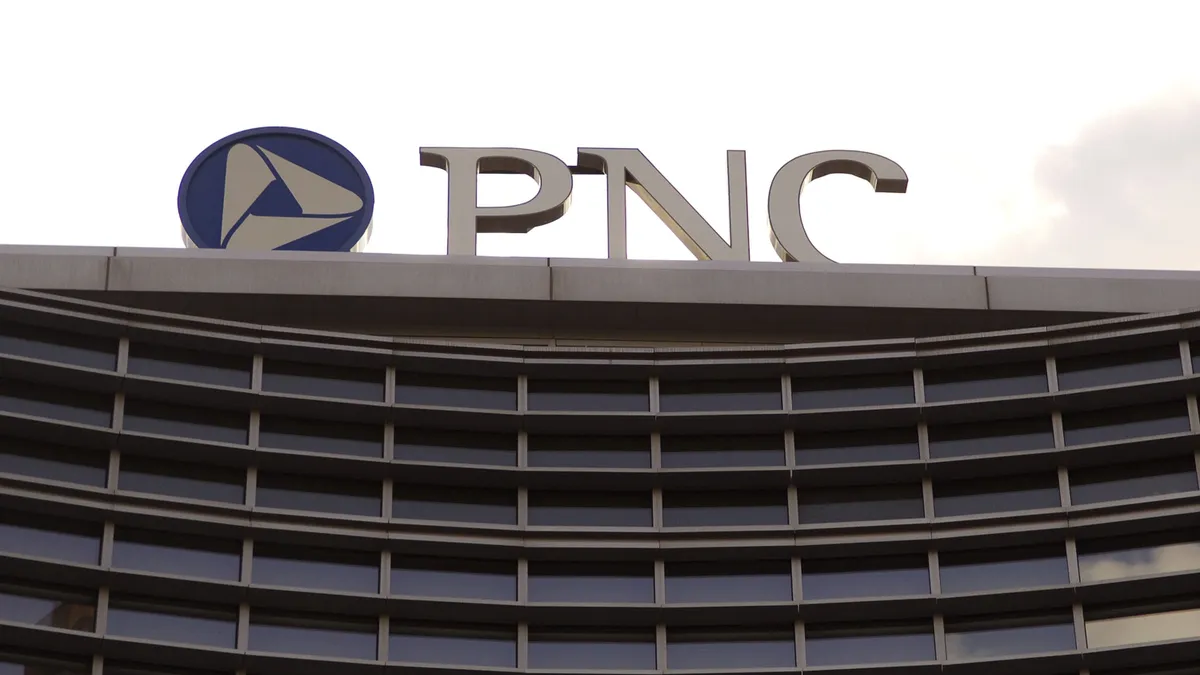As more customers have turned to e-commerce amid the coronavirus pandemic, point-of-sale installment loan fintechs such as Klarna and Afterpay have grown in popularity and value over the past few months. Fellow competitor Affirm last week even launched a buy-now-pay-later (BNPL) debit card.
BNPL fintechs, which allow customers to break up an online purchase into a series of payments that can be paid over time, facilitated $20 billion to $25 billion in transactions in the U.S. last year, according to management consultants Oliver Wyman.
That number is only expected to grow. Consumers will spend an estimated $680 billion globally using point-of-sale installment payments over e-commerce channels by 2025, fintech research firm Kaleido Intelligence found in September.
"The point-of-sale and the buy-now-pay-later space is grabbing market share from what traditionally was part of the private-label credit card space," said Kevin Lewis, chief revenue officer for digital banking service provider Amount, which spun out from online lender Avant in January 2020.
Amount's strategy is to provide traditional incumbents their own white-label BNPL services. It works with banks, rather than merchants, to set up a point-of-sale financing interface built into the bank's legacy system.
The startup takes a percentage for any loans that a bank processes through its services, according to TechCrunch. That's in addition to an up-front implementation fee that averages around $1 million, the publication reported, but varies based on the scope of services and solutions procured, an Amount spokesperson said.
The fintech, which raised $140 million last year, is partnering with TD Bank, enabling the lender to offer shoppers an installment payment option when they make online purchases of products by NordicTrack, a merchant partner of the bank. The company has four other yet-to-be announced financial institutions that use its point-of-sale service, and Avant will launch on the platform this year, Lewis said.
"It's a whole different bottom infrastructure that [banks] need to play in this space and so they're having to figure out solutions to get to market," Lewis said.
Using Amount, a bank can launch its own white-label installment financing solution in months rather than years, he said.
"When you close the technology gap and arm the banks with the technology that can help them compete with and beat the fintech players in the space, then ultimately, they're positioned to win in the category."
A shift in customer behavior
A growing subscription mindset among consumers has helped boost the popularity of BNPL, Lewis said.
The model's appeal appears to be generational, according to research from consumer spending data firm Cardify.ai, which found that Gen Z and younger millennials account for more than 80% of BNPL transactions.
"We're unlocking a younger audience and debit-card consumers," David Sykes, head of Klarna U.S., told The Washington Post. "After the global financial crisis [of 2007-08], young consumers in particular became much more skeptical of traditional banks and credit card companies."
Retailers seem to like the BNPL model, too, and are partnering with point-of-sale fintechs to increase sales, said Ted Rossman, an analyst at Bankrate and Creditcards.com.
"There's definitely a lot of data out there that these customers tend to spend more — they tend to be loyal. It's directly tied to a purchase, which the retailers love," he said.
And the feature is something retailers are willing to pay more for, Rossman added.
"A typical credit card interchange fee is 2% or 3%. The buy-now-pay-later companies usually take about 5% or 6% from the retailers," he said. "But when the retailers see data like repeat customers who are transacting with larger ticket sizes and coming back again and again, it's a trade-off they're willing to make."
Payment volumes grew by more than 50% among the space's top four firms through the first nine months of 2020, according to The Wall Street Journal, which cited data from Autonomous Research.
"It's going to be interesting to see how this evolves. I think right now has been the perfect storm for buy-now-pay-later, with the pandemic, with ease shopping and with people being very debt-averse," Rossman said.
Banks' advantage
Banks with existing merchant relationships could have a competitive edge in entering the BNPL space, Lewis said.
"If they're already partnering with merchants with credit card or other private-label credit card or other financial products, they're really well positioned," he said.
Recent growth in e-commerce has helped Citizens Bank expand the reach of its checkout loan offerings. Big-tech partnerships such as Apple iPhone financing and Microsoft's Xbox All Access loans have helped the bank unlock new customer relationships.
On the retail side, Macy's invested in and partnered with Klarna ahead of the holidays last year. And Affirm counts Shopify, Gucci, Bonobos, The RealReal and Peloton among its partners.
"We are still in the experimentation phase on how prominent BNPL will become, but the fact that upstart new players have been adopted by major merchants is a significant achievement," said John Grund, a managing director in Accenture's payments group.
Banks' lower cost of capital from deposits and their larger balance sheets could set them apart from BNPL fintechs, Lewis said.
Grund, however, said he expects banks' response to the sector to be measured.
"We expect banks to be surgical and cautious — for example, evaluating BNPL on a merchant-by-merchant basis," he said.
Several banks have already launched services that let customers repay certain transactions in fixed installments.
Citi, the nation's largest credit card issuer, launched Citi Flex Pay and Citi Flex Loan in 2019. The former lets users choose a purchase to pay off via fixed payments and a fixed annual percentage rate (APR). The latter lets cardholders borrow from their credit card limit and repay in installments at a fixed APR. JPMorgan Chase, likewise, launched My Chase Plan and My Chase Loan in 2019.
Challenger bank Upgrade launched a credit card in 2019 that that mirrors the BNPL service, combining monthly charges into installment plans and allowing customers to choose a period between 24 and 60 months to pay it off.
The card's underwriting technology uses machine learning to analyze FICO scores, credit history data, income, employment and debt-to-income ratio. It also considers some alternative data such as utility bill payment history and cash-flow analysis.
There's certainly no shortage of interest in BNPL. Ally Financial left the credit card business in 2019 in favor of a point-of-sale model. Traditionally non-BNPL payment companies have looked to get in on the action, too. PayPal last fall launched Pay in 4, which lets consumers pay for a purchase of between $30 and $600 in four installments over a six-week period.
Not every bank is so sold on BNPL, however. Capital One last year barred customers from using its credit cards to clear buy-now-pay-later debt.
Affirm's debit card launch, meanwhile, represents the most direct challenge to the banking sector by a BNPL company, Rossman said.
The card would allow customers to either pay up front or in installments.
"It's the first debit card that's directly linked to buy-now-pay-later," Rossman said. "It'll function more like a bank card, where you could just take it into a coffee shop, an electronics store or a clothing store, or you can buy something online. There's none of that friction of having to reapply every time. In that sense, I think it's more directly competing with the banking industry than their previous offering."
The takeaway
While the BNPL market represents a relatively small niche of the broader payments ecosystem in the U.S., incumbent banks should take note of what the growth of the space says about the next generation of consumers, Grund said.
"This dynamic, such as pay in four installments, is appealing to younger consumers with digital-first preferences, many of whom saw their parents struggle with credit debt during the financial crisis, and are now cautious about credit card debt," he said.
Nearly 80% of consumers using BNPL are attaching their purchases to a debit card, Grund said, a trend that points to a customer segment that is budget- and credit-conscious.
"Banks should be mindful of further consumer behavior changes and the appeal and importance of a seamless, integrated customer experience to both consumers and merchants,” he said. “Also, banks are taking note of merchants showing a willingness, at least near-term, to pay a fee to BNPLs after decades of pressuring banks and networks to reduce fees."






















